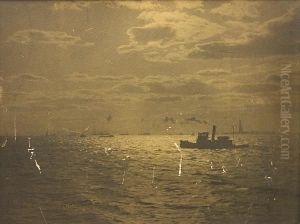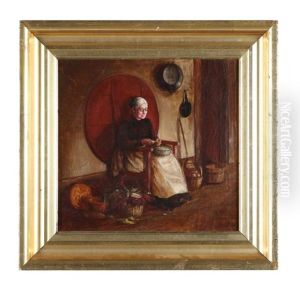Chansonetta Stanley Emmons Paintings
Chansonetta Stanley Emmons was an American photographer born on December 30, 1858, in Kingfield, Maine, to Solomon P. Stanley and Apphia Kezar. She grew up in a family that valued creativity and innovation, as her brothers, F.E. and F.O. Stanley, went on to invent the Stanley Steamer automobile. Chansonetta, often referred to as 'Nettie,' developed a keen interest in photography, an art form that was still relatively new and gaining popularity during her lifetime.
Educated at Western State Normal School in Farmington, Maine, Nettie initially pursued a career in teaching. However, after her marriage to James Nathaniel Emmons in 1887 and the birth of her daughter Dorothy in 1898, Chansonetta turned her focus to photography, a field in which she could work from home and attend to her family. Her husband's early death in 1898 further necessitated her need to support herself and her daughter.
Chansonetta's photographic work is characterized by its documentation of rural New England life at the turn of the 20th century. She often captured scenes of everyday activities, portraying the simplicity and hardships of rural existence with a sense of romantic nostalgia. Her images were crafted with an eye for composition and detail, conveying a powerful sense of humanity and the beauty of ordinary moments.
During her career, Emmons traveled throughout New England, particularly in Maine, with her camera and portable darkroom. She would often bring her daughter along, making it a family endeavor. Although her work was not widely recognized during her lifetime, Emmons' photographs were exhibited at several local and regional exhibitions. It wasn't until later in the 20th century that her contributions to American photography and her unique perspective on rural life began to be appreciated more broadly.
Chansonetta Stanley Emmons continued to photograph until her death on July 8, 1937, leaving behind a rich visual legacy that provides invaluable insight into the cultural and social fabric of New England during her lifetime. Her work is now held in several prestigious institutions, including the Phillips Museum of Art at Franklin & Marshall College and the Penobscot Marine Museum in Searsport, Maine.

